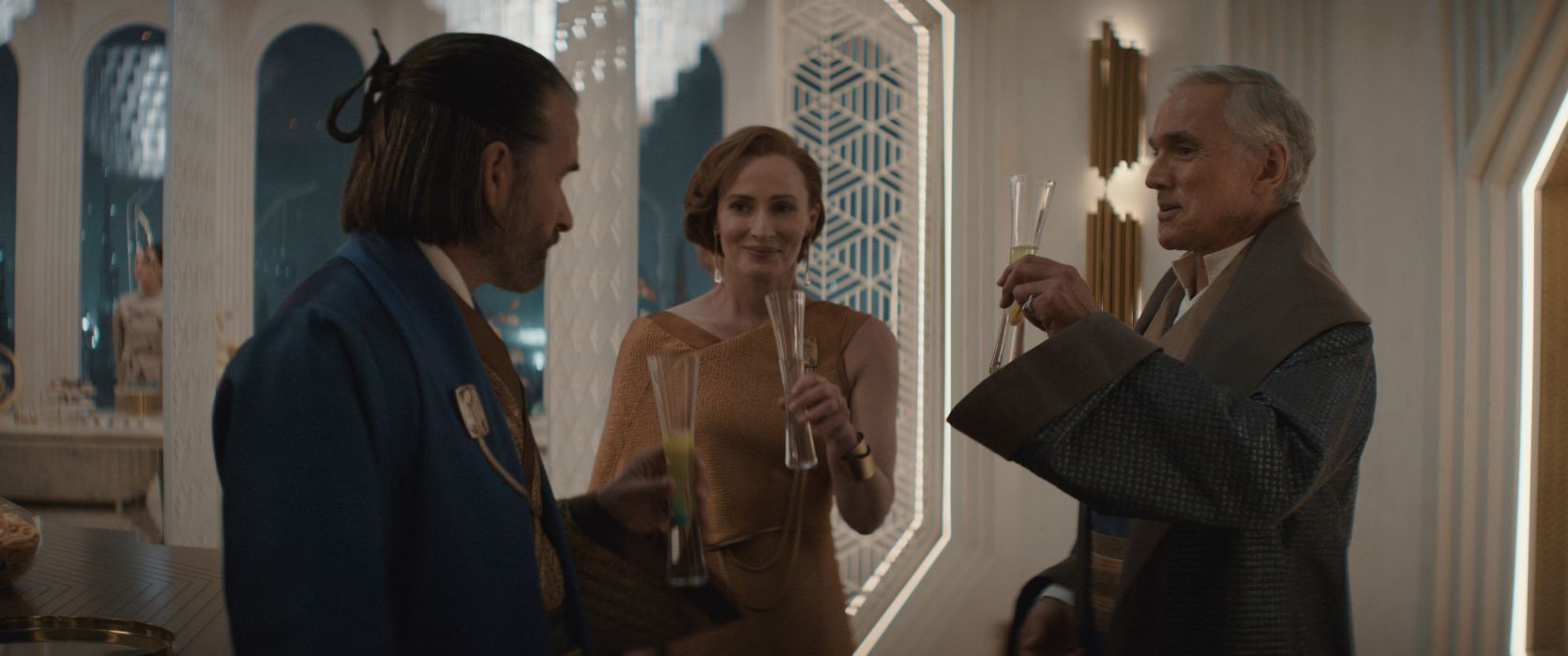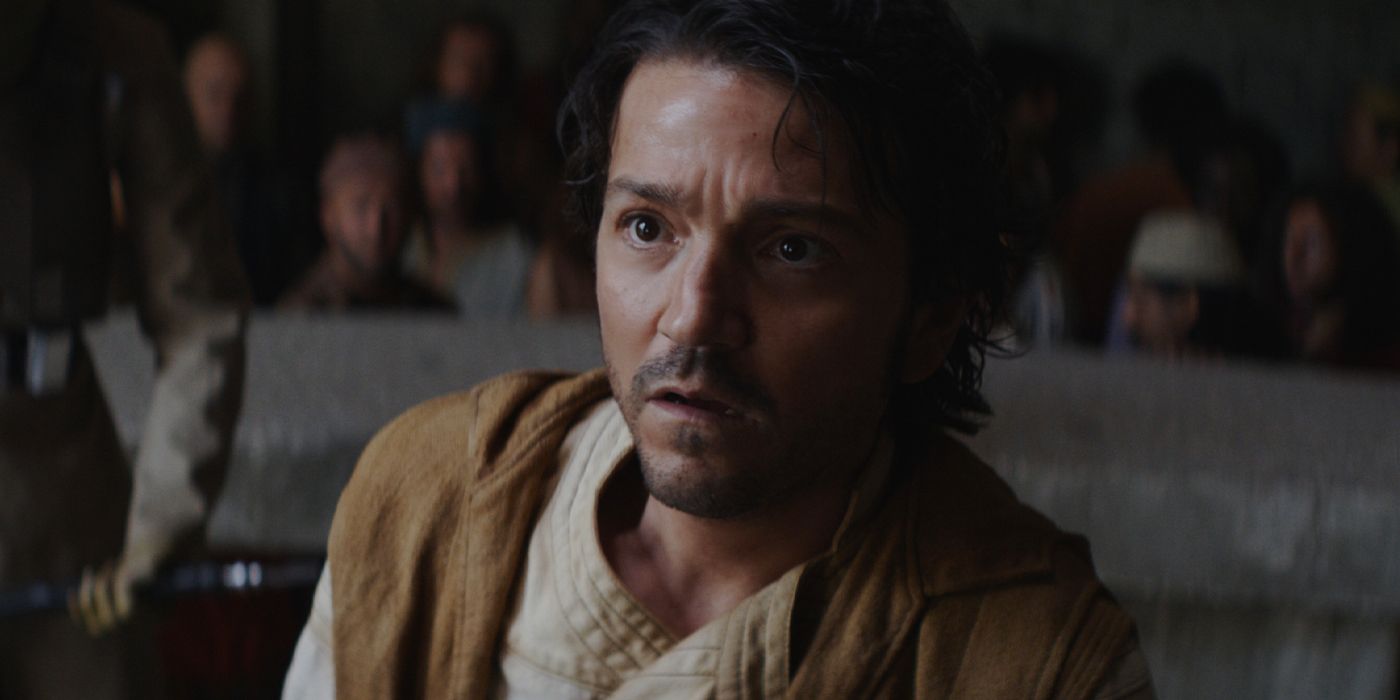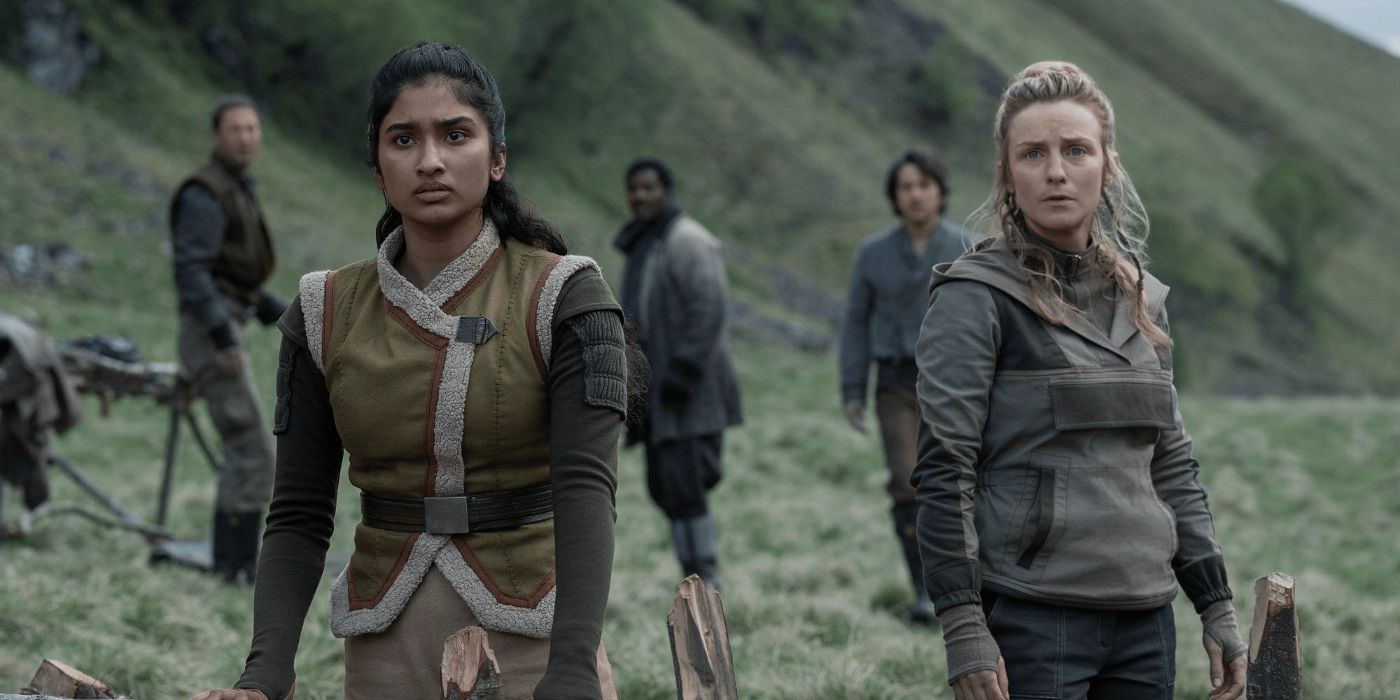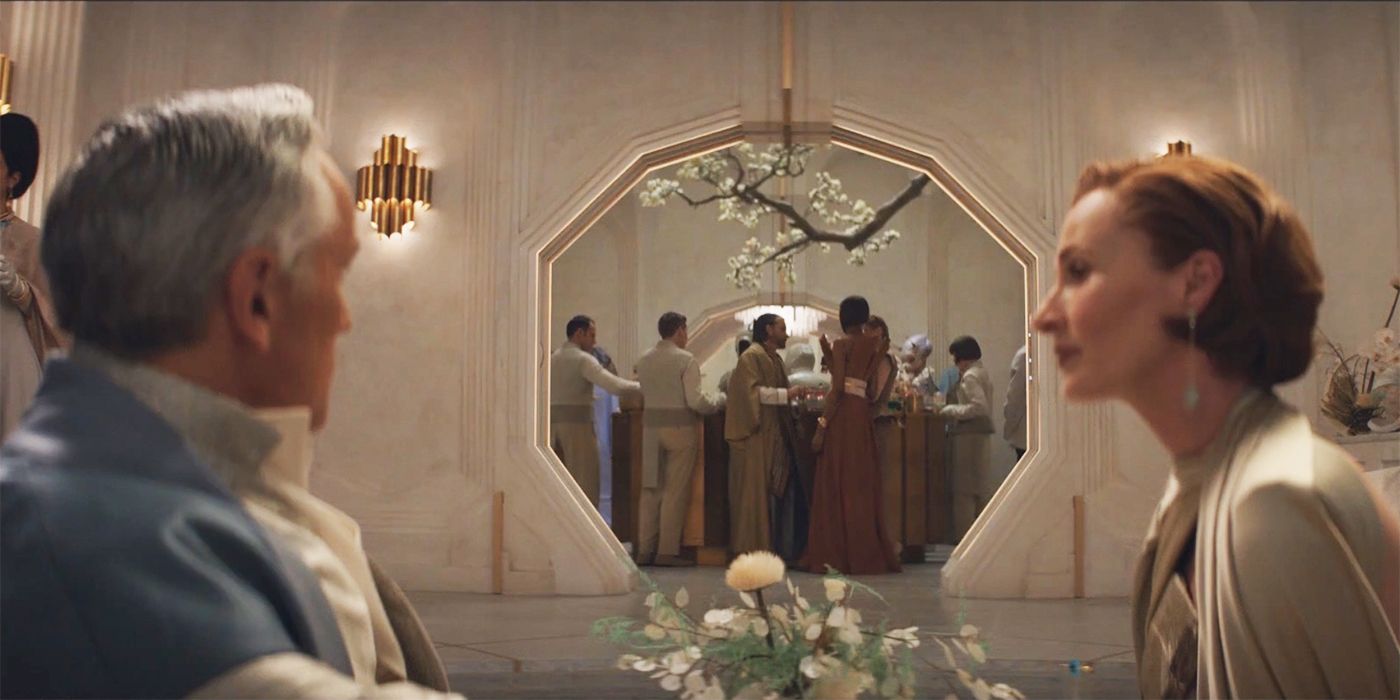Tony Gilroy's critically acclaimed series Andor has transported audiences back to the five-year window of time before the tragic events of Rogue One, showcasing the journey that Cassian Andor (Diego Luna) went through to become the man that was willing to sacrifice his life to ensure the Death Star plans fell into the right hands. While Andor has focused on a whole ensemble cast of characters, Cassian has been the heart and soul of the series, with the last three episodes centered around his incarceration within an Imperial factory facility on Narkina 5. Across the ten episodes that have currently aired, Andor has shown a wide array of cultures, including the Dhani people on Aldhani, the industrious residents of Ferrix, and the lost people of Kenari. All of these vibrant communities were brought to life through the ingenious costume designs of Andor's costume designer Michael Wilkinson, who Collider had the opportunity to chat with ahead of the premiere of Episode 10.
During the conversation with Wilkinson, he spoke about how his earlier projects influenced his approach to Andor, how he carefully chose the colors, textures, and styles associated with each planet the series goes to, why he wasn't able to utilize preexisting costuming to match Gilroy's vision for the show, and how the wardrobe that each character wears is designed to conceal their true nature. Wilkinson also confirmed that he would be returning for Season 2, which is set to begin filming at the end of the month.
COLLIDER: So obviously I looked at your resume, and you have done so many incredible projects and such a wide variety of them. So I'm curious, was there anything that you learned on some of the previous films you worked on that you brought with you to Andor?
MICHAEL WILKINSON: I think the biggest thing, probably, was the storytelling of it all. I feel like when you work on these long format series, the story arcs are so long, they go for 12 episodes, so that's like nine hours. So that's almost like three or four motion pictures. So you really have to be very clear with the storytelling that you're doing with your costumes. So things like establishing. We spend a lot of time establishing the different palettes for the different worlds that we go to. So when you cut from Ferrix to Aldhani, from Coruscant to Narkina 5, they're all really carefully curated pallets of textures and colors and things so that the information will be really clear for the audience.
We worked a lot on thinking about differentiating the planets. It helped us to think about what climate the planet was, what the raw materials were, so we could really think hard and deep and make that very authentic for the viewer. We thought about the cultures on the different planets. How developed is the culture, what technologies do they have to make their clothes and things. So all of that exploration really helps sharply define the seven or eight different planets that we went to, and I think that my experience in motion pictures really helped me with that definition.
I was so impressed with Mon Mothma's wardrobe, and pretty much all of the Chandrilans just in general, they're gorgeous, and it seems like so many of her costumes really pair nicely and balance with her surroundings. And so I was a little bit curious to know, what went into those design choices and making sure that she seemed almost part of the sets that she was on as well.
WILKINSON: Well that's where it's really important to collaborate with the production designer. I had such an enjoyable time working with Luke Hull, our incredible production designer, and we were in each other's pockets about color palettes and what I just was talking about, the cultures, the climate, the materials that they would have at hand to build their worlds, their interiors, and their architecture, and their clothing. So we really dialed that down quite closely. And so we were always working together. I think you can see it really clearly in places like the embassy where Mon Mothma is just a beautiful sea of creams, and ivories, and oyster tones, and it came together really nicely.
I noticed that throughout the series, Cassian is very much bundled up in layers. He has that really great jacket, and then of course it's got ponchos when they're on Aldhani. Then when he goes to Niamos for the first time, and he has much lighter materials on, he's on vacation, and he immediately gets arrested. And it was such an interesting contrast in seeing how his clothing seemed to also pair with the situation he was in. So I was curious to know if there were any different ideas floated for that scene in specifics, or what went into the designing of the aesthetic of Niamos for the costumes.
WILKINSON: I'm really glad you noticed that because it was really one of the things that really appealed to me about this project, was this idea of disguises and all the main characters really, Mon Mothma, Cassian, and Bix, they're all using their clothes to hide their true selves because they're living in a world where it's dangerous for them to reveal their true natures. With Cassian, I have this design conundrum. I've got a leading character that needs to disappear, not draw attention to himself, hiding in his clothes. But as he is our lead actor, he still has to be compelling, and have some swagger, and be something that the audience is drawn to.
So the arc of his costumes over the 12 episodes is going from hiding in his clothes, layers, bundling up on cold Ferrix, and he's a bit of a mess-up. He is messing things up. He's having to loan money from people. He's not really getting his shit together. He's not the hero that we know and love from Rogue One. But as he goes through the season, you see him shedding layers a little bit, and his silhouettes become a bit more tailored, longer lines, the shoulders become square, and he's transforming subtly into the hero that we know and love from Rogue One. So that was my thinking behind his costumes.
I'm curious to know what was the most difficult costume to either design or to settle on the perfect design for them?
WILKINSON: I think the prison costumes for Narkina 5. We spent so much time on them because we knew we would see so much of them there over two or three episodes. We know we see hundreds of men wearing these uniforms, and we were going to see every square inch of them. But I have to say I'm really pleased with the way they came out. I feel like we wanted them to feel disposable, that they're out of this papery, strange fabric that they threw them away at the end of the day and got a fresh one the next day. But we wanted a little bit of that retro, vintage, '70s graphic that we see put down the arm, the orange to make them pop, so the guards would be able to spot them easily. But again, they blend into the white walls in an interesting way. So Luke and I really worked hard on those scenes, and I was worried that they would look a bit bland and boring but actually, there's some of my favorite sequences in the whole series.
They are spectacular. I was going to ask you about those costumes, and so you answered that question for me. But I'm curious, when you're working with an established universe like Star Wars, what is the acquisition process for filling in for background costumes? Is there a warehouse, a Star Wars warehouse somewhere where you can order the costumes to come in a crate to wherever you're filming? Or do you actually design everything that goes on in the background as well?
WILKINSON: Such good questions today.
I've worked in costuming in the film industry, so I was very excited to talk to you.
WILKINSON: I knew there was something going on here. You know the questions to ask. I think what really excited me about starting this project, was this sense of gaining or working with the incredible costume language of the Star Wars world. There's been a long line of amazing costume designers who have shared their vision of the Star Wars world since 1977. So it was thrilling to offer my own take on that whole world, of course. But yes, when you sign on as a costume designer, there is a back catalog of costumes from previous productions that are available to be viewed, and to be inspired by. It was a challenge because we wanted to show Tony's vision for this series [which] was very specific. He didn't want it to feel like a space opera, over the top, very bold design choices. He wanted to be very subtle in nuances, and a more detailed, authentic approach to the story of the costumes.
So a lot of the costumes that were available as background costumes weren't exactly right for our field. So we launched a huge building process. We made lots of prototypes. We had hundreds and hundreds of costumes made in lots of, I think [there were] about five different workrooms, both here in the UK and in Europe. So we created our own stock for all of the different planets. But it was fun, as I say, to have the inspiration and the starting point of a language of costuming that was available to us from the previous productions.
Behind the scenes is always fascinating to me. As I said, I've worked in films and television stuff before. I think it was Aldhani that was very remote for you in terms of where it was filmed. What was the process like for costuming all of that? Was it bringing stuff out really early? What was it like? I love sharing that behind-the-scenes feel with our readers.
WILKINSON: All of the principal costumes were made in our studio here in London. A lot of the background costumes were made in different workrooms around the UK and Europe. Then even the stuff that was made outside was brought back to the studio.
Everything goes through a very elaborate process of aging and distressing. Nothing is worn just like straight off the workroom floor. It's all given interesting patinas and age so it really has a lovely, authentic, worn quality to it. Then we shipped all of those costumes up to Scotland where we were filming, and we were working with lots of background performers that were local to Scotland. We had a team of people that were sent up there to fit and create all of these great background characters, the uniforms, the nomadic mountain culture of the Aldhani. We fitted a whole spectrum of characters for that sequence. But the principal characters were fitted and prepped in our London studios.
Are you returning for Season 2, as well?
WILKINSON: I am returning. We'll be back to that shooting in two weeks' time. So it's getting very busy around here at the moment.
How has that process been, starting to build costumes for Season 2?
WILKINSON: I must say, it's been a fascinating process because we want to take things even further, of course, than Season 1. We want it to be even more powerful for the audience. So we build from what we learned from Season 1, but every day we're also challenging ourselves to go further and to make sure that we're just creating as compelling and powerful an experience for our viewers for Season 2.
Andor is streaming now on Disney+. For more on the show watch our interview with Andy Serkis down below:

-Andor-Interview-Feature.jpg)



